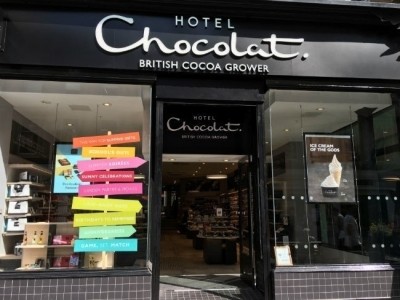Inside Mars Wrigley's strategy to tap emerging global markets

With $22bn of sales, Mars Wrigley maintained its title of the world’s biggest confectionery firm in 2023 by a comfortable margin. To consumers in the west, its portfolio of brands is packed with established household names, from Twix, to Skittles, Life Savers and Juicy Fruit.
But despite its size and strength, there are many parts of the world the confectioner hasn’t yet conquered and so its execs have set their sights on the developing world, identifying 140-plus areas as emerging markets worthy of exploring. Home to 65% of the world’s population and five billion potential consumers, it’s not hard to imagine the sales potential.
Shopping for snacks
“Global emerging markets are where the future of snacking will be forged because they are such dynamic and vibrant markets where the opportunities for growth outstrip older markets,” says Fadi Abi-Nader, Vice President of One Demand, Global Emerging Markets (GEM) at Mars Wrigley. His firm estimates that more than 75% of the future snacking category growth will come from these areas which include countries such as India, Vietnam, Nigeria and Mexico.
“These include some of the world’s fastest-growing economies that are being transformed by urbanisation, rising affluence and aspiration for global brands,” he says. “Emerging market consumers are evolving their lifestyles, including how they snack.”
How to appeal to new market
A rinse and repeat of the company’s existing sales strategies won’t work says Abi-Nader. “To grow across such diverse and large markets, we know we need to evolve our products and services to respond to evolving trends and local factors.”
Here’s Mars Wrigley’s five-point plan of how they hope to expand.
1. Prioritising cultural relevance
Mars Wrigley currently invests more than $200m (Є187m) annually in product innovation.
Yet connecting with new audiences requires more than pure innovation or a huge cash injection.
“To win in these new markets, we need to be culturally relevant and find ways that build on the power of our iconic brands to engage with emerging market consumers,” says Abi-Nader. “Simply coming into these markets with a one-size-fits-all approach would fail.”
Taking time out to visit markets is crucial to understand the wants and needs of each markets’ consumers. “Going on the streets of the market – like Vietnam, the Philippines, Nigeria, and Mexico recently – opens me up to so much in terms of what kind of consumer culture it is, how different it is,” adds Abi-Nader.
Developing responsible and sustainable plans is also vital. Mars Wrigley aims to ensure its product innovations are accompanied by work to support local communities and the environment. “The critical balance is to adapt our brands to be more culturally relevant while maintaining [their] essence,” says Abi-Nader.
2. Experimenting with unique flavours and formats
Mars Wrigley’s market teams and modern manufacturing plants are geared to help achieve the tricky balance between meeting the diverse needs of global confectionery shoppers and delivering unique flavours and formats.
For example, mixing sweet with spicy and salty – the ‘swicy’ and ‘swalty’ trends – in confectionery is proving popular with consumers. “Some of the fastest-growing emerging markets have traditions of spicy and savoury taste profiles,” says Abi-Nader.
Mars has a large business in Mexico behind the Skwinkles and Lucas candy brands that is based around chilli-based sweet treats. “We are also realising that spicy and savoury flavours are very relevant in India and Asia, and we are exploring what this means for us in terms of innovation,” he says.
The firm is also experimenting with culturally relevant variants of its established brands: passion fruit version of the Snickers bars sold in Brazil, for example or adding dates to the popular Galaxy chocolate bar for the Saudi market.
Understanding which formats work best with retailers is also key. Developing market retailers tend to be family-owned stores or roadside kiosks. “Smaller sizes at lower price points work extremely well for these customers,” says Abi-Nader.
“Beyond local flavours, we have a clear and conscious strategy to drive health and wellness via innovative new products,” he says. Mars Wrigley is currently introducing its KIND range into markets like the Middle East and will explore how it can meet the demand for healthier snacks exploring health ingredients like nuts and fruit.
3. Producing everyday and premium products
Creating both mass everyday confectionery items and premium products that respond to consumer habits requires extensive research and development. “While there are differences, there are some consumer habits that are more common in emerging markets than developed markets,” says Abi-Nader.
Gifting and sharing confectionery is one such ritual. “Sharing treats with friends and family is a consumer behaviour we see a lot in places as diverse as Mexico, India, Saudi Arabia and South East Asia,” says Abi-Nader. For these markets, Mars Wrigley is developing smaller formats of its brands like Galaxy/Dove and Snickers for sharing bag product lines at lower price points and using wafers to create unique gifting versions of its product ranges.
Mars is also developing its premium chocolate offerings. For example, its Mexican chocolate brand Turin is positioned as a premium chocolatier brand in the market, offering premium in-store experiences in 50 stores around the country and a range of premium chocolate offerings in retail stores. In the Middle East, Mars has created its Galaxy Jewels offering over the last 30 years, including Eid-themed Ramadan caskets.
4. Developing heat-resistant, free-from and wafer-based formulations

Various local manufacturing and product development developments have led to new, more heat-resistant wafer-based products and chocolate. Through its businesses in the Middle East and India, Mars Wrigley has developed versions of its chocolate brands that are slightly more heat resistant while maintaining their recognisable taste profiles. Creating these versions enables the company to bring quality products to market in a hotter and more humid tropical climates.
The company also produces vegetarian and eggless products such as Snickers, Twix, Bounty, and M&Ms specifically for consumers in the Middle East and India to help make them more accessible to consumers there.
Wafer-based versions are also “a key strategic way” to bring its brands to more consumers in more countries, as they offer a taste of Mars Wrigley’s brands at a more attainable price. “We have been particularly successful with Galaxy Flutes and the newly launched Bounty and Twix rolled wafers in the Middle East,” says Abi-Nader.
5. Focussing on logistics
Mars Wrigley also focuses on pursuing packaging innovations that make those same products more accessible to open, transport and display. The company is also focusing on environmentally friendly packaging and is opting to use more sustainable packaging, such as paper recyclable wrappers confirms Abi-Nadar.













